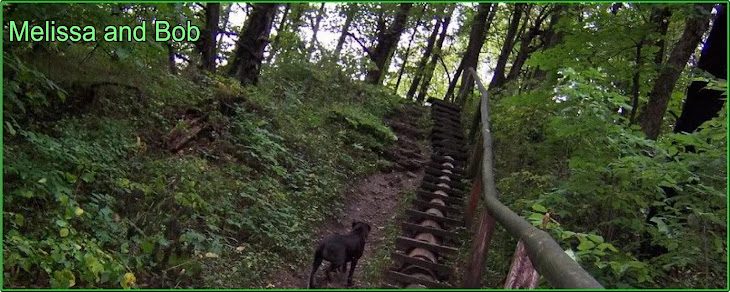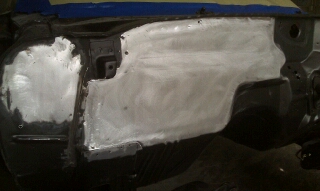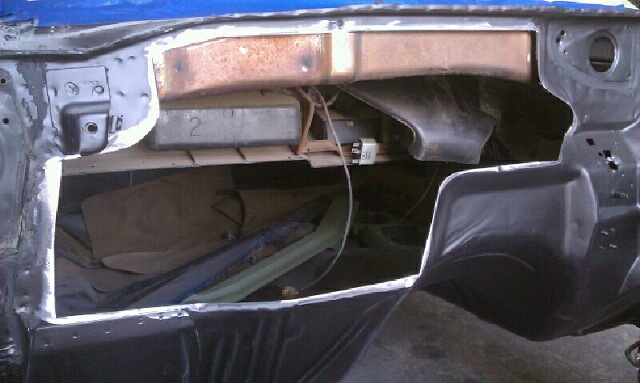While there are other methods of making soap (hot process and melt & pour), this tutorial will provide a basic overview on how to make your own all natural cold process soaps. It will be added to the Soapmaking page on my blog along with other helpful links and recipes, so be sure to bookmark or pin it for easy reference.
This is not a stand-alone reference. Go to YouTube and watch some videos.
A few things to note, before we start:
Making soap is not the most frugal activity out there. I like to use
top-grade, organic ingredients, so I spend about $3.00 and up,
per bar, and and that’s not including the cost of packaging. You
can certainly use cheaper ingredients (in fact, I suggest you do so
for your first learning batch), but if you want free or almost free
soap, check out Money Saving Mom. I still have stacks of Ivory
soap that I got for FREE using her grocery shopping deals and
tips!
Many people are afraid to make soap because it involves
handling lye. I know that feeling, because I was the same way! I
had my husband do that part at first until I got more
comfortable with the idea. Lye requires a huge amount of
caution, but you just need to employ the same common sense
you’d use for any potentially dangerous situation such as
cooking with a hot stove, or driving down the road in your car.
Handle the lye with proper protective gloves and eye wear
along with a healthy dose of respect. If you’re careful, you’re
not likely to get splashes, but just in case, wear long sleeves. Do NOT involve your children in this activity. There are other fun ways they can “make” herbal soap, that I will cover in another post, another day.
This is just an overview. There are many tutorials and books out there that cover soap making. I have some listed on my Soapmaking Page and a Google search will help you find others.
It’s prudent to do your research and view the art from many perspectives before attempting. Kathy, an experienced soap maker of 15 years, has a great comment below, outlining further precautions to keep in mind.
An accurate digital scale is essential! I used this one from Amazon.com for five years before it broke (and by that, I mean it stopped measuring in anything but grams – which is still usable, but not always useful for my various projects.) I bought a replacement at Walmart that also works great.
Okay! Now, we’re ready to start! You’ll want to do the following things:
(1.) Choose a recipe and run it through a lye calculator,
especially if you decide to make changes to it. Each type of oil
requires a different amount of lye to saponify (turn into soap.)
So, if you’re out of the castor oil called for in a recipe and want
to use shea butter instead, you’re going to need a different
amount of lye or your soap will end up too harsh or too soft. I
like to use the Majestic Mountain Sage Lye Calculator. Just plug
your recipe into the blanks and calculate the lye needed. If you
click the screenshot above, you’ll see it gives a range of liquid to
use and a range of lye. I use around the 6 for lye and a midway
point for the water/liquid (about 15 ounces in the example
above.)
(2.) Assemble your ingredients and safety gear. Lye is
sometimes hard to find; my local Tractor Supply store carries
two containers at a time and I found a small, local Mom & Pop
type hardware store that has a few as well. Make sure the bottle
says Sodium Hydroxide and nothing else. You may have to order
online. If so, here are two sources: Brushy Mountain Bee Farm
and Bramble Berry.
I buy my oils & butters from Mountain Rose Herbs, but you can
also check your local grocery and health food stores. Don’t
forget you’ll need heat & chemical proof gloves and safety
goggles along with a kitchen or candy thermometer (a separate
one used strictly for soap and not food use.) Wear long sleeves
in case any lye splashes on your arms. (This has not happened to
me in 10 years of soapmaking, but it’s always better to be safe
than sorry!)
(3.) Prepare your molds by lining with parchment paper. I
have homemade wooden box molds that my dad and brother
made for me, but you can also buy them from several places
online such as Bramble Berry. I’ve even seen people use
rubbermaid containers or heavy duty cardboard boxes. A quick
google search will likely give you plenty of inspiration!
(4.) Now, we start measuring stuff. First, you’ll want to
measure out your water into a heat proof tempered glass jar,
pyrex measuring cup, stainless steel or heavy duty
polypropylene plastic (recycle symbol 5) container. [NOTE: I've
been told that glass/pyrex can weaken over time and shatter, so
to be absolutely safe, use one of the alternatives.] Mark this
container clearly with a symbol such as a skull and crossbones
and don’t put it in your fridge or on the counter where someone
might mistake it for a beverage.
All soap ingredients should be weighed with a digital scale,
this includes your liquids. This picture shows me measuring
water for a recipe that called for 20 to 31 ounces of liquid. I
decided on a mid-range of 26 oz. You can see I went over .3
ounces. This is okay for liquids, but not okay for oils and most
definitely not okay for lye. Those need to be precise. More liquid
means your soap takes a bit longer to set up (useful if you’re
adding honey or beeswax or other items that speed up things)
and less liquid means it sets up and is ready to pour into molds
faster.
(5.) Next, measure out your lye. (Make sure you have on
those gloves and goggles!) I use an old plastic cup, labeled
“Lye” in several places all over with a Sharpie. I pour slowly and
carefully then immediately re-cap the lye container and place it
far from the reach of children and pets. I take a wet paper towel
and thoroughly wipe down the scale and surrounding area in
case a tiny grain got loose. Then I do it again with a fresh paper
towel. This may seem over-kill, but I have kids and pets and just
one tiny grain accidentally picked up and rubbed into an eye or
eaten wouldn’t be cool. I’d rather take a few minutes to be safe
now than sorry later.
(6.) Pour the lye into the water (or other liquid.) I do this in
my kitchen sink in order to catch any splashes or drips and just
in case I have a “volcano.” This only happened to me once
because I tried to pour my lye into a very hot herbal tea. I
should have been patient and waited for it to cool first, but did
not and had to start all over. So, make sure you pour the lye
into water that is cool or no warmer than room temp. Also,
you always add the lye to the liquid and not the other way
around (the other cause of lye volcanoes.) This mixture shoots
up to over 200 degrees F quickly, so use caution when handling.
Avoid directly breathing in the fumes. (I keep the window over
my kitchen sink opened during this step or work outside on my
back deck. If you don’t have proper ventilation, consider wearing
a mask.) Stir with a long wooden spoon or rubber spatula until
fully dissolved and set in a safe place, out of reach of children
and pets, until it cools to about 90 to 125 degrees.
(7.) While the lye solution is cooling, weigh out the oils and
butters called for in your recipe. Place these in an enamel or
stainless steel pot, that you plan to use for soap making only.
(Do not use aluminum during any stage of the soap making
process.) Turn the heat on low and gently heat the oils until they
reach 90-125 degrees F.
(8.) Before mixing, make sure your lye and oils are roughly
the same temperature in the range of 90 – 125 degrees F. I
sometimes add an ice cube or two to my lye solution to cool it
faster (remember the water amount can be adjusted by this
small amount) or set my pan of oil down into a sink filled with a
few inches of water and ice cubes if it needs cooling.
Temperature is a subjective, personal preference that varies
between soap-makers. Some will only mix at higher
temperatures than I list while others let everything sit overnight
and mix the next morning at room temperature. The main thing
is that your lye solution and oils are about the same
temperature when you mix them. Once the desired temps are
reached, slowly drizzle your lye solution into your pot containing
oils and butters.
(9.) Using a stick blender, start combining the lye solution
and oils, stopping to occasionally stir and check consistency.
It only takes a few minutes for most of my recipes to reach
“trace” – which means when you drizzle a small bit of the soap
mixture over the surface, it will leave a faint pattern or trace
before sinking back into the mixture. (Click on the picture above,
which demonstrates this.) My first several batches of soap were
made without using a stick blender. Every single one failed. I
highly highly HIGHLY recommend using one. I have one by
Cuisinart that I’ve had for many years. Make sure you use it
strictly for soap making and not for food use. Once trace is
reached, you’ll add any extras such as honey, oatmeal,
natural colorants, and essential oils and blend for just a bit
more until they are all incorporated.
(10.) Working quickly, pour the soap into your prepared
molds, smoothing the top with a rubber spatula or wooden
spoon. Pick up your mold and give it a few sharp raps on the
table or counter surface to help get rid of any little air bubbles
that may have formed. The soap is still caustic at this point, so
keep your gloves on and be aware that the mixture can burn
your skin. If that happens you can rinse thoroughly with water or
pour vinegar over the spot to offset the alkalinity (or both.)
(11.) Cover with the mold top, then several layers of
blankets and quilts to make sure the soap is well insulated and
retains the heat needed to finish saponifying. Leave undisturbed
for about 24 to 36 hours.
(12.) Unmold your block of soap. You can cut it into bars right
away or later. I like to do it fairly soon after making, so that the
soap is still soft and easy to cut. Use a ruler and a knife to cut
into desired sizes. Let the bars cure in the open air on pieces of
wax paper or brown paper, turning occasionally, for about 4
weeks. Since I almost always superfat my soaps, (which means I
put in extra oils that the lye does not transform to soap), they
are gentle enough to start testing after three weeks. I always test
on myself a few days before trying out on other family
members, just to be safe.










